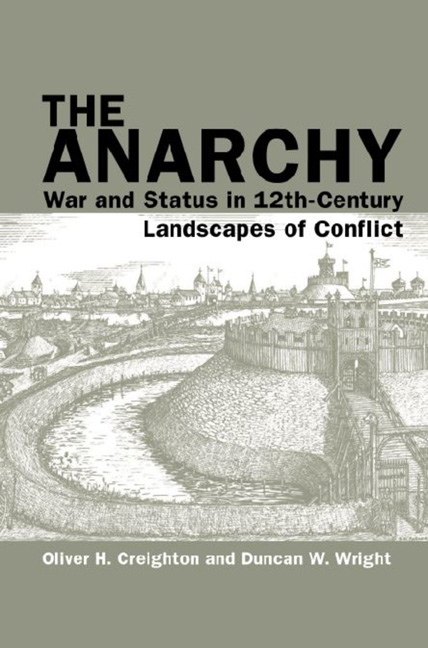Book contents
- Frontmatter
- Contents
- Acknowledgements
- List of Figures
- List of Colour Plates
- Chapter 1 Introduction
- Chapter 2 Historical Outline and the Geography of ‘Anarchy’
- Chapter 3 Waging War: Fields of Conflict and Siege Warfare
- Chapter 4 Architecture and Authority: Castles
- Chapter 5 Material Culture: From Arts to Coins
- Chapter 6 Performing Violence: Arms, Armour and Military Apparel
- Chapter 7 Faith and Fortification: The Church
- Chapter 8 Town, Village and Country
- Chapter 9 Anarchy on the Fen Edge: Case Study of the Isle of Ely
- Chapter 10 The Twelfth-Century Civil War in Context: Assessment and Reassessment
- Appendix Key Sites to Visit
- Bibliography
- Index
- Plate section
Chapter 10 - The Twelfth-Century Civil War in Context: Assessment and Reassessment
- Frontmatter
- Contents
- Acknowledgements
- List of Figures
- List of Colour Plates
- Chapter 1 Introduction
- Chapter 2 Historical Outline and the Geography of ‘Anarchy’
- Chapter 3 Waging War: Fields of Conflict and Siege Warfare
- Chapter 4 Architecture and Authority: Castles
- Chapter 5 Material Culture: From Arts to Coins
- Chapter 6 Performing Violence: Arms, Armour and Military Apparel
- Chapter 7 Faith and Fortification: The Church
- Chapter 8 Town, Village and Country
- Chapter 9 Anarchy on the Fen Edge: Case Study of the Isle of Ely
- Chapter 10 The Twelfth-Century Civil War in Context: Assessment and Reassessment
- Appendix Key Sites to Visit
- Bibliography
- Index
- Plate section
Summary
A LONG-STANDING focus for historical debate on King Stephen's reign concerns whether or not the epithet ‘the Anarchy’ is appropriate for the period. The pendulum of opinion has swung between maximalist and minimalist viewpoints with sharply different understandings of the scale, intensity and impact of the conflict and of the degree to which royal government broke down. If nothing else, ‘the Anarchy’ makes a useful distinction from the ‘English Civil War,’ which is universally understood as the crisis of the mid-seventeenth century. Scholars have also assessed the characters and achievements of the main historical figures of the period – primarily King Stephen, his cousin and nemesis the Empress Matilda and the king's younger brother Bishop Henry of Blois. Other debate has centred on the attitudes and agency of the Church and the aristocracy during the conflict, and considered how these institutions were transformed by it. Without doubt, the concept of the ‘Anarchy’ of the twelfth century was in need of deconstruction and critical examination, but it is unclear how much further debate can develop if it remains focused on essentially the same body of documentary source material. Accordingly, this volume has attempted to draw together the full range of archaeological and material evidence – comprising sites, landscapes and artefacts – alongside new spatial presentations and understandings of documentary sources to afford a rather different perspective on the civil war and its era. Both direct and indirect evidence for the nature and impact of the conflict have been considered at different scales, from individual items of portable material culture to buildings, to nationwide patterns of conflict events. What does this reassessment provide?
Using the Archaeology
This body of archaeological and other material evidence – old and new – does not and cannot contribute evenly to all the different areas of debate about Stephen's reign and the so-called ‘Anarchy.’ Archaeologists have sometimes applied the labels ‘the Anarchy’ and ‘Anarchy-period’ rather loosely and often inappropriately. The period has sometimes been used as a convenient chronological peg from which to hang interpretations and around which site chronologies have been based, sometimes without due caution.
- Type
- Chapter
- Information
- The AnarchyWar and Status in 12th-Century Landscapes of Conflict, pp. 279 - 289Publisher: Liverpool University PressPrint publication year: 2017



